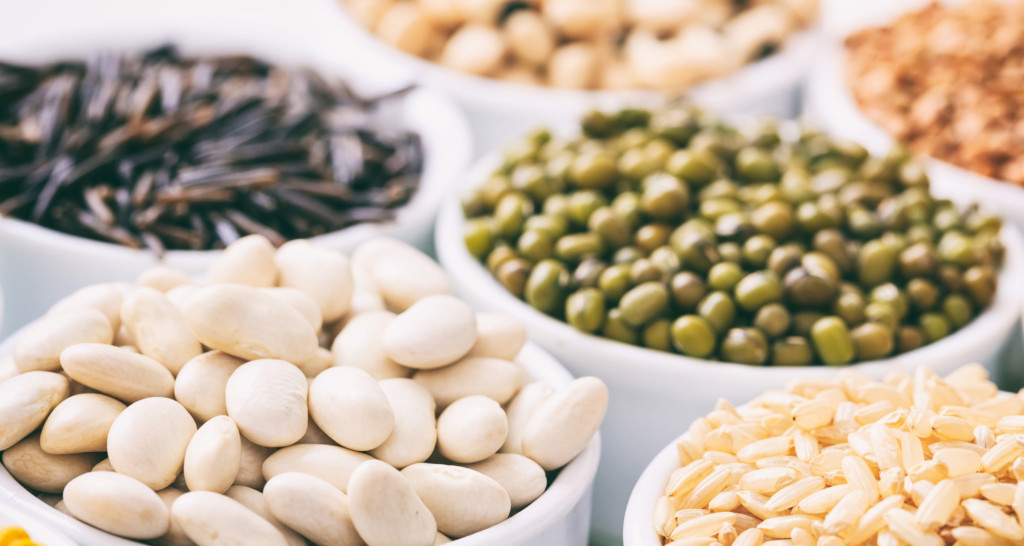
[tldr]
- Fibromyalgia is a chronic pain disease that’s miserable to have. It’s also a bucket diagnosis — there’s no test for fibromyalgia, and often patients with depression, anxiety and chronic pain will get a fibromyalgia diagnosis when doctors don’t know what else to do.
- Fibromyalgia is not currently classified as an autoimmune disease, but people who treat it as such have a lot of success. Changing your diet to manage inflammation and balance hormones can help ease fibromyalgia.
- This article talks about how a high-fat, low-carb, anti-inflammatory diet can decrease pain and manage symptoms of fibromyalgia.
[/tldr]
Fibromyalgia is an unusual illness. It’s reasonably common — several million cases a year — and, according to most doctors, it’s incurable. The main symptoms of fibromyalgia are chronic pain and fatigue, depression, anxiety, migraines, and brain fog.
What makes fibromyalgia strange is the variety of things that seem to cause it. Researchers have been debating the cause of fibromyalgia for years. While there’s no clear biological reason for the pain and fatigue in fibromyalgia, more and more researchers suspect it could be an autoimmune issue[ref url=”https://www.ncbi.nlm.nih.gov/pubmed/15082086″]. The traditional treatment for fibromyalgia is drug-based: a combination of opiate painkillers, antidepressants and anti-anxiety medication. But there’s also a great deal you can do with diet to manage fibromyalgia symptoms.
Download the Bulletproof Diet Roadmap to learn what and how much to eat
Fibromyalgia and autoimmune disease
Fibromyalgia and autoimmune diseases share symptoms, as well as a lot of the same triggers:
- Genetics. Some people seem to be genetically predisposed to fibromyalgia[ref url=”https://www.ncbi.nlm.nih.gov/pmc/articles/PMC1779444/”].
- Stress and trauma. Chronic stress can set off fibromyalgia, as can psychological trauma. If you had a traumatic childhood or have post-traumatic stress disorder (PTSD), you’re at much greater risk for fibromyalgia[ref url=”https://www.ncbi.nlm.nih.gov/pmc/articles/PMC3894419/”]
- Obesity. Being overweight or obese increases your risk of fibromyalgia as well[ref url=”https://www.ncbi.nlm.nih.gov/pubmed/22760458″].
- Poor sleep. Low-quality sleep is a risk factor for fibromyalgia[ref url=”https://jamanetwork.com/journals/jama/article-abstract/1860480″]. Sleep deprivation triggers neuropathic muscle pain (similar to fibromyalgia) in healthy young adults; increasing sleep quality gets rid of the pain[ref url=”https://insights.ovid.com/crossref?an=00006842-197601000-00006″].
- Gluten sensitivity. A lot of people are sensitive to gluten, but not at a level that counts as celiac disease. If you’re gluten-sensitive, you have a higher risk of fibromyalgia[ref url=”http://www.aulamedica.es/nh/pdf/7866.pdf”].
Fibromyalgia and diet
If you have fibromyalgia, use the following nutritional changes to help manage your symptoms.
Go gluten-free for fibromyalgia
Even if you don’t have celiac disease, you could be sensitive to gluten. Non-celiac gluten sensitivity is a common trigger for fibromyalgia[ref url=”http://www.aulamedica.es/nh/pdf/7866.pdf”].
If you don’t have a severe reaction to gluten, it can be easy to miss non-celiac gluten sensitivity — but sensitivity to gluten is fairly common[ref url=”https://www.ncbi.nlm.nih.gov/pubmed/30009718″][ref url=”https://www.ncbi.nlm.nih.gov/pubmed/28810029″], and eating it could be quietly sapping your energy and causing background inflammation, which can contribute to fibromyalgia. There are a variety of other reasons to avoid gluten and grains, too.
Try cutting gluten out of your diet and see how you feel. You may notice a major difference.
Related: What to Eat When You Have Autoimmune Disease
Eat more fat (especially omega-3s)
A high-fat, low-carb diet can help you minimize a lot of the more severe symptoms of fibromyalgia.
- People with chronic pain showed a significant decrease in brain hyperexcitability and reported less pain after switching to a ketogenic diet[ref url=”https://www.ncbi.nlm.nih.gov/pubmed/24930805″]. Eating keto also treats a variety of neurological disorders by normalizing brain activity[ref url=”https://www.ncbi.nlm.nih.gov/pubmed/22509165″].
- A keto diet decreases inflammation and eases joint and muscle pain[ref url=”https://www.ncbi.nlm.nih.gov/pmc/articles/PMC5981249/”].
- Keto enhances cognitive function, which could help with the brain fog common in fibromyalgia[ref url=”https://www.ncbi.nlm.nih.gov/pubmed/27568199″].
- High-fat diets are great for weight loss[ref url=”https://www.ncbi.nlm.nih.gov/books/NBK499830/”], and losing weight significantly reduced pain and depression in overweight people with fibromyalgia[ref url=”https://link.springer.com/article/10.1007%2Fs10067-012-2053-x”].
Eating a ketogenic diet or a variation of it (like cyclical keto) could help you with fibromyalgia.
And while you’re eating more fat, make sure you double down on omega-3s from wild-caught fish like salmon and sardines. Several small studies have found that omega-3s decrease neuropathic pain[ref url=”https://www.ncbi.nlm.nih.gov/pubmed/20090445″], including pain from fibromyalgia[ref url=”https://www.ncbi.nlm.nih.gov/pubmed/10919346″], and a robust collection of research shows that omega-3s are great for decreasing inflammatory pain[ref url=”https://www.ncbi.nlm.nih.gov/pmc/articles/PMC4030645/”][ref url=”https://www.ncbi.nlm.nih.gov/pubmed/17335973″].
Lectins and fibromyalgia
Cutting lectins out of your diet may also help with fibromyalgia.
Lectins are proteins found in beans, lentils, peanuts, wheat and other grains, and nightshade vegetables like peppers, eggplant, and potatoes.
If you’re sensitive to lectins (a lot of people are), eating them can cause widespread, low-grade inflammation and pain[ref url=”https://www.ncbi.nlm.nih.gov/pmc/articles/PMC1115436/”], as well as arthritis[ref url=”https://www.ncbi.nlm.nih.gov/pmc/articles/PMC1115436/”]. Lectins can also contribute to autoimmune diseases, and removing them from diet relieves autoimmune issues in many patients[ref url=”https://www.ncbi.nlm.nih.gov/pubmed/25599185″].
That said, lectin sensitivity varies a lot from person to person. You may be able to eat lectins without a problem. The best way to find out is by removing lectins from your diet for a month and seeing how you feel. You can also test your C-reactive protein (CRP) levels before and after the month to see if your inflammation goes down.
The big lectin-containing foods you’ll want to avoid are:
- Grains (especially whole grains)
- Potatoes
- Tomatoes
- Beans
- Soy
- Peanuts
- Lentils
- Peppers
- Eggplant
- Chickpeas
- Milk and cream
If you have fibromyalgia, changing your diet can make a huge difference in your symptoms and how you perform day-to-day. If you aren’t sure where to start, the Bulletproof Diet Roadmap is a simple (and free) guide to which foods you should eat and which foods you should avoid.













